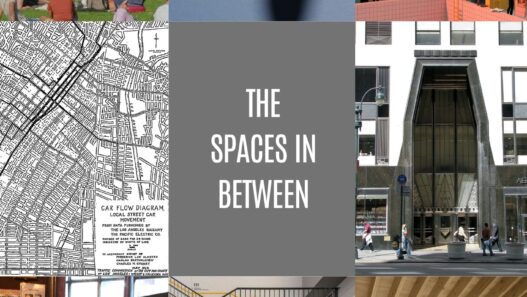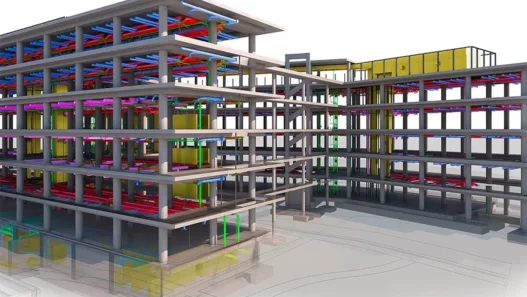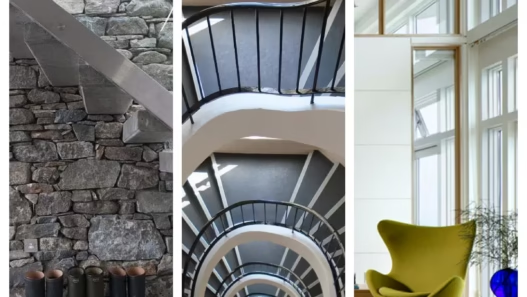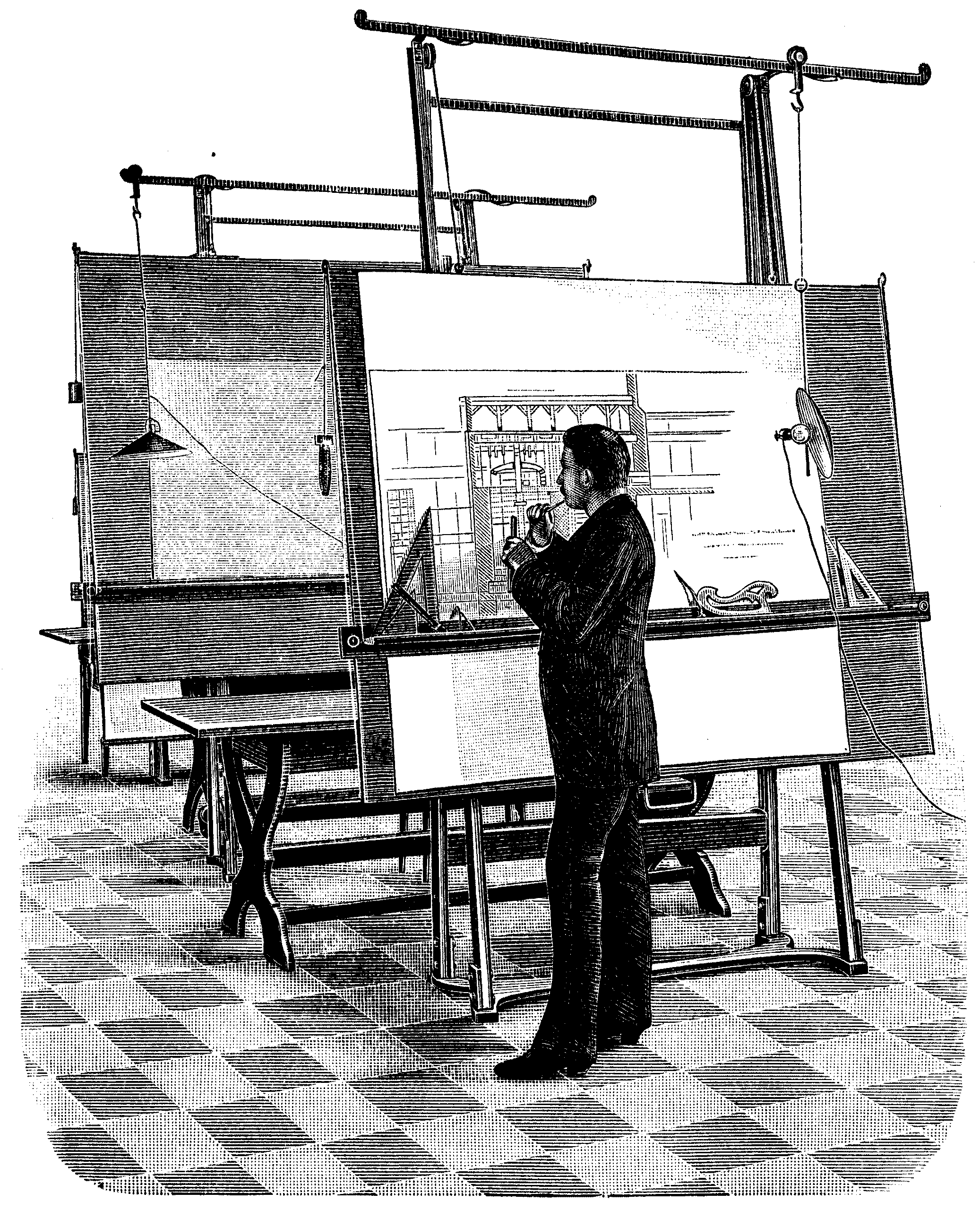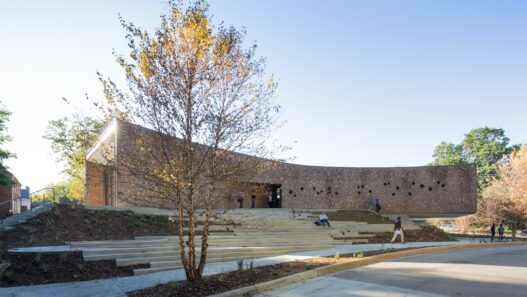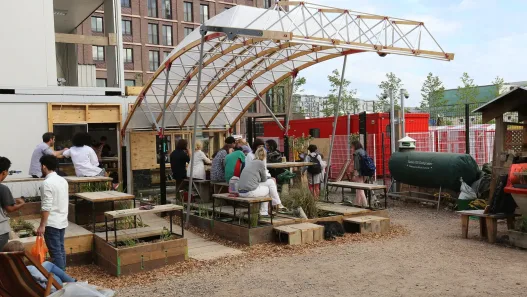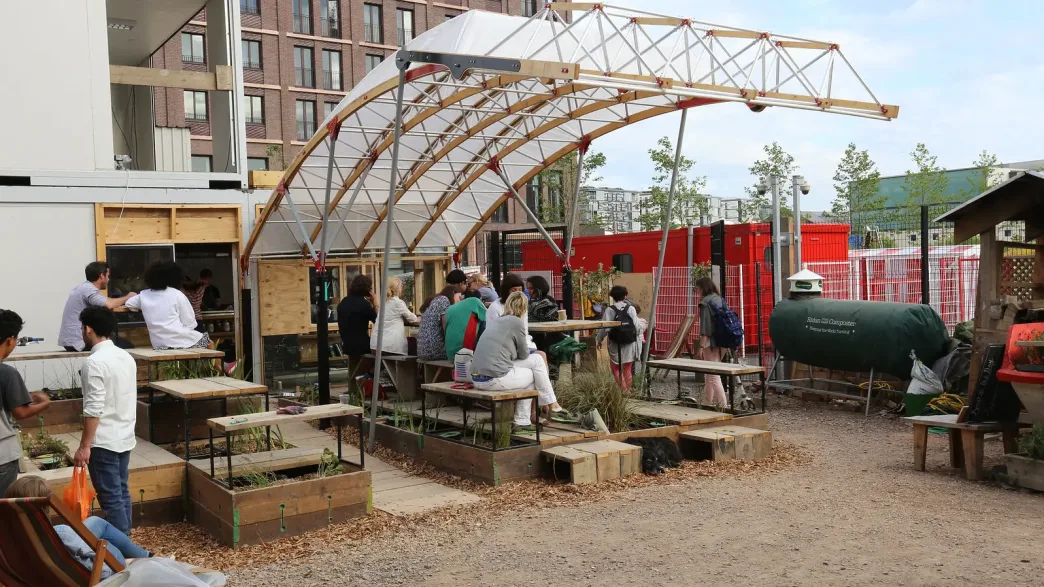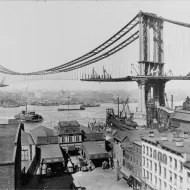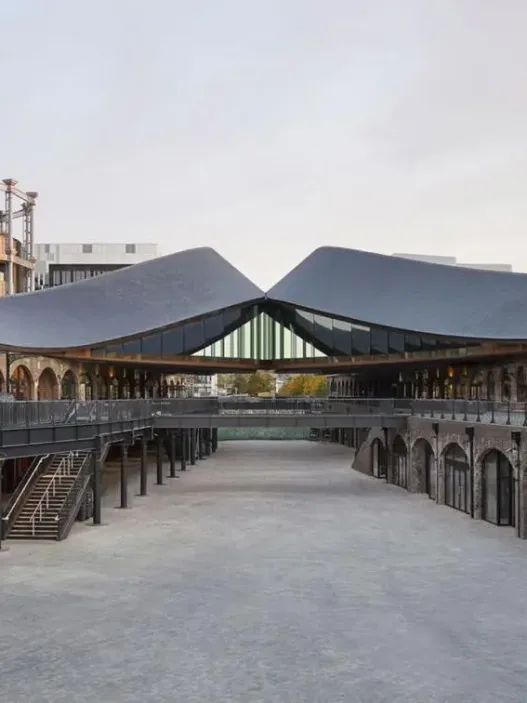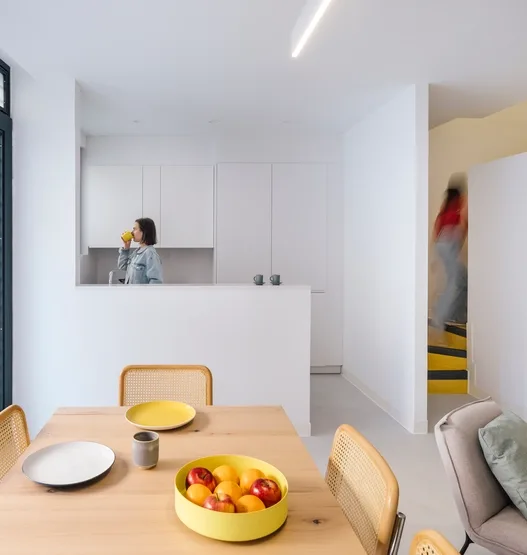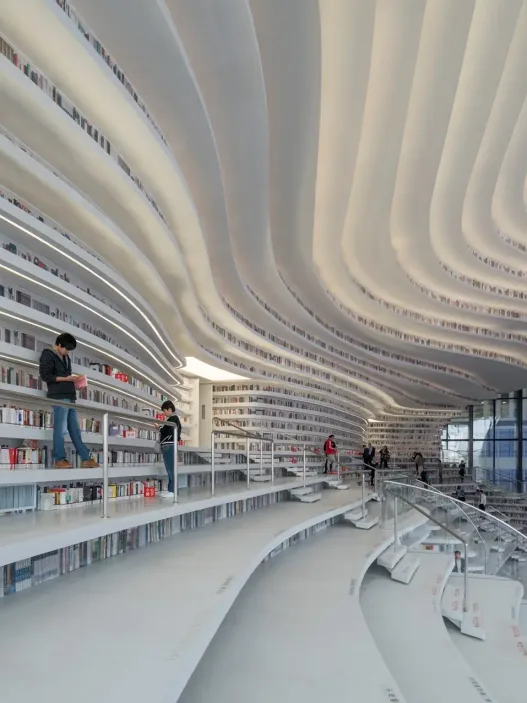Cooperative design is an approach that emphasizes teamwork and ideas sharing among various stakeholders in the architectural process. This method promotes creativity and innovation by bringing together different perspectives, skills and experiences. As the world becomes more interconnected, the need for cooperation in design has increased significantly, leading to more holistic and sustainable architectural solutions.

Description of collaborative design
Collaborative design can be defined as a process that multiple people or groups work together to achieve a common design goal. This process includes architects, engineers, customers, and even community members, all contributing with their own opinions and expertise. The essence of collaborative design is based on communication and cooperation, and often allows for a more inclusive process that results in designs that better meet the needs of users and the environment.
Historical context
The concept of cooperation in design has developed over the centuries. In ancient societies, builders often worked closely with craftsmen and society to create structures that reflect both functionality and cultural values. However, the industrial revolutionWith the arrival of the design, the design was further divided into sections, and the roles of architects and builders were separated from each other. The collaborative design fed by movements such as participatory design, which aims to include users’ voice in the design process, started to attract attention again until the end of the 20th century. This change marked a return to the social aspects of architecture, where the needs of end users were at the center of the design.
Its importance in modern architecture
In today’s fast-paced world, the importance of collaborative design in architecture is undeniable. Modern challenges such as urbanization, climate change and social inequality require innovative solutions that can only be achieved through collective effort. Collaborative design enables architects to benefit from a wide range of perspectives, creating more sustainable and context-sensitive designs. For example, community-attended projects often produce areas that are not only functional but also resonated with the cultural and social dynamics of the region. This approach improves the quality of life of the residents of the region and encourages the feeling of protecting the built environment and being proud of it.
Basic principles of cooperation
There are several main principles on the basis of successful collaborative design. Transparency is very important; All participants should feel that they have the authority to openly share their views and insights. Confidence among team members promotes a safe environment where creativity can develop. Flexibility is also important, as cooperative processes often require adjustments and adaptations based on feedback and new ideas. In addition, a shared vision helps everyone to be harmonious and motivated, enabling the project to progress in a harmonious manner. By adhering to these principles, teams can overcome difficulties more effectively and produce designs that truly reflect the collective inputs of all stakeholders.
Overview of interdisciplinary applications
Collaborative design often intersects with interdisciplinary practices where experts from various fields come together to inform the design process. This may include city planners, environmental scientists, sociologists and even artists. Architects can produce more robust and versatile solutions by integrating information from different disciplines. For example, when designing public spaces, inputs from urban ecologists can lead to greener, more sustainable environments, while information from sociologists can improve social interactions in these areas. This blending of specialties not only enriches the design, but also allows it to appeal to the complexities of modern life.
As a result, collaborative design represents a change towards inclusiveness and creativity in architecture. Understanding its definition, historical context, importance, principles and interdisciplinary nature, we can appreciate how this approach leads to better buildings and communities that reflect the diverse needs of the society.
The role of technology in collaborative design
Cooperation in the field of architecture and design is the key to creating innovative and functional spaces. Technology plays an important role in facilitating this collaboration, facilitating the effective work of architects, designers, engineers and stakeholders. As we review this topic, we will explore various digital tools, methodologies and communications platforms that improve collaborative design processes and eventually lead to more successful results.
Digital tools and software
Digital tools and software revolutionized the way architects and designers approach their projects. Gone are the days when plans and sketches were the primary communication tool. Today, powerful software applications enable teams to visualize their ideas in real time, share feedback instantly, and repeat designs more efficiently. Programs such as AutoCAD, SketchUp and Revit offer detailed modeling and display, facilitating the transfer of complex concepts to customers and stakeholders.
These tools also support remote collaboration where team members can work together from different locations. Cloud-based platforms allow everyone to access the latest versions of files, allowing changes to be tracked and communicated effectively. This democratization of design tools has not only increased productivity, but also promoted a culture of creativity where ideas can be freely shared without physical limits.
Building Information Modeling (BIM)
Building Information Modeling (BIM) represents an important leap in collaborative design. BIM is a digital representation of the physical and functional characteristics of a building and allows all project participants to work from a common model. This shared resource becomes a center for information that covers everything from architectural and structural elements to mechanical systems.
BIMThe real strength of the organization lies in its ability to develop interdisciplinary cooperation. Architects, engineers and contractors can work on the same model, make changes at the same time and see the results of their changes in real time. This interconnected approach minimizes errors, reduces costs, and facilitates project timelines. For example, if an architect adjusts the placement of a wall, the structural engineer can instantly evaluate how this change affects the load distribution and ensure the protection of safety and compliance standards.
Virtual reality and augmented reality
Virtual Reality (VR) and Augmented Reality (AR) have provided immersive experiences that allow designers and customers to interact with projects in unprecedented ways. VR creates a completely immersive environment where users can explore a building before it exists, walk through spaces, and experience the scale and ratio first hand. This technology provides a powerful tool for customer presentations, enabling stakeholders to visualize and interact with designs, enabling more informed feedback and decisions.
On the other hand, AR allows teams to visualize design elements in real time by overlaying digital information over the physical world. For example, a designer can use AR glasses to reflect a digital model onto a construction site and help employees understand how the components fit into the current environment. This feature not only improves communication, but also saves time and resources, helping to identify possible problems before construction starts.
Communication platforms for teams
Effective communication is at the center of successful collaborative design. Modern communication platforms such as Slack, Microsoft Teams and Trello allow teams to stay connected independently of their physical location. These tools facilitate instant messaging, video conferencing and project management, allowing team members to seamlessly share their ideas, documents and updates.
Moreover, these platforms often integrate with design software, creating a harmonious workflow where discussions about certain elements can take place directly in the context of the project. This integration reduces misunderstandings and keeps everyone on the same page. Teams can share files, create to-do lists and assign tasks, so that all members are dependent and responsible for their roles in the project.
Impact on design efficiency
The integration of technology into collaborative design processes has significantly increased design efficiency. By facilitating communication, improving visualization and promoting real-time collaboration, projects can progress more smoothly and quickly. Teams can handle issues quickly, adapt to feedback, and often implement changes without delays in traditional methods.
This efficiency not only accelerates project timelines, but also improves the quality of the final product. Thanks to technology that facilitates collaboration, design solutions can be more innovative as different perspectives and specialties contribute to the development process. For example, in large urban planning projects, the collective knowledge of architects, urban planners and community stakeholders can lead to designs that better meet the needs of society, resulting in not only functional but also enriching areas for their users.
As a result, the role of technology in collaborative design is transformative and creates opportunities for advanced communication, efficiency and creativity. As digital tools, BIM, VR, AR and communication platforms continue to evolve, the future of architectural collaboration seems promising and paves the way for more innovative and responsive design applications.
Criticism of Interdisciplinary Architecture Practices
Interdisciplinary architectural applications have gained momentum in recent years by bringing together different fields such as art, technology, sociology and environmental science to create innovative and responsive designs. While this collaborative approach often leads to groundbreaking projects, it also brings with it various criticisms and challenges that need attention. Understanding these criticisms can help architects and designers to handle the complexity of their work more effectively, making their contributions meaningful and sustainable.
Difficulties in cooperation
Cooperation is at the heart of interdisciplinary architecture, but often it can be full of challenges. Different disciplines have their own methodologies, terminologies and cultural norms. For example, an architect can focus on spatial functionality, while an artist can prioritize aesthetic expression. These different priorities can lead to misunderstandings or conflicts, making it difficult to find a common ground.
Also, cooperation requires effective communication, which is not always easy among professionals with different backgrounds. Discord in targets can result in projects that are disconnected or inconsistent with each other. For example, a project that aims to combine sustainable design with artistic elements may encounter obstacles if team members do not fully understand each other’s perspectives. Ultimately, a successful cooperation relies on mutual respect and the desire to engage in open dialogue, and encourages an environment where all voices are heard and valued.
Balancing artistic vision and practicality
In interdisciplinary practices, finding a balance between artistic vision and practicality is a constant struggle. Architects often come up with bold and innovative ideas, acting with creativity and artistic intentions. But these visions should also meet practical demands such as budget constraints, building regulations and customer needs.
This tension can lead to compromises where the final product may not fully represent the original artistic vision. For example, a stunning, avant-garde design of a building can be reduced due to financial limitations and a structure that lacks the intended effect. On the contrary, an overly pragmatic approach can suppress creativity, and as a result, cookie-cutting buildings may emerge that do not inspire. Achieving this balance requires a subtle understanding of both artistic desires and the realities of construction and functionality, and encourages designers to think critically about how to harmonize these elements.
Writing and Credit Topics
As interdisciplinary teams work together, questions of authorship and lending often arise. When multiple disciplines contribute to a project, it can become complicated to determine who deserves recognition. This problem is more pronounced, especially in large-scale collaborations where contributions can become blurred and difficult to determine individual achievements.
The reputation problem can cause tension among team members, especially if one discipline feels overshadowed by another. For example, if a very visible architectural feature is celebrated, the contributions of engineers or artists who support this vision can be ignored. This lack of appreciation can discourage future collaboration and reduce the motivation of those who play critical roles behind the scenes. It is important for the teams to make clear agreements on authorship from the very beginning and to encourage the environment of mutual respect and recognition.
Environmental and social issues
Interdisciplinary architecture has the potential to address urgent environmental and social issues, but it is also faced with criticism about how effectively it does so. While many projects aim to bring sustainable practices together, the difficulty is to ensure that these efforts do not remain only superficial. For example, a building may boast of environmentally friendly materials, but fail to address broader social issues such as community participation or inclusion.
Moreover, the intersection of architecture with the social sciences can create additional complexities. A project designed to revive a neighborhood can unintentionally disrupt existing communities if not approached with precision. Communicating with local stakeholders is crucial to understanding the social fabric of the region and ensuring that designs really benefit society. Interdisciplinary practices should strive for a holistic approach that takes into account social equality as well as environmental sustainability and lead to designs that serve both people and the planet.
The future of interdisciplinary criticism
Looking ahead, criticisms of interdisciplinary architectural practices will likely evolve with the field itself. As technology advances and social needs change, architects and designers will need to adapt their approach to stay up-to-date. The rise of digital tools and data-driven design brings new challenges to privacy, surveillance, and ethical issues, although it offers exciting opportunities for collaboration.
Also, as global problems such as climate change and urbanization intensify, interdisciplinary practices will need to handle these complexities more firmly. In the future, more emphasis can be placed on community-oriented design, where feedback loops between architects and the communities they serve become standard practice. This change can lead to projects that are not only innovative, but also have deep roots in social and environmental contexts.
As a result, interdisciplinary architectural practices have great potential, but are also full of challenges and criticisms. By addressing these problems, architects can create more meaningful, inclusive and sustainable designs, and these designs can resonate with different stakeholders. The interdisciplinary cooperation journey continues and brings with it opportunities for growth, learning and innovation in the field of architecture.
The future of collaborative design
When we look at the horizon of architectural practice, collaborative design is at the forefront of innovation and creativity. This approach not only improves the built environment, but also promotes a sense of community and common purpose among different disciplines. In this research, we will examine various aspects of collaborative design, including emerging trends, educational effects, sustainability practices, global perspectives and future forecasts.
Trends in interdisciplinary cooperation
In recent years, the world of architecture is increasingly adopting interdisciplinary cooperation. This change is due to the recognition that complex problems such as urbanization, climate change and social equality require different specialties. Architects, engineers, city planners, landscape designers and even artists come together to create holistic solutions.
One of the notable trends is the integration of digital technologies that facilitate real-time collaboration. Tools such as Building Information Modeling (BIM) allow teams from different disciplines to work on the same digital platform, ensuring that the input of each stakeholder is taken into account throughout the design process. This also promotes open communication culture and common goals.
In addition, collaborative design encourages community members to participate in the planning stages. With the inclusion of local voices, projects can better reflect the needs and desires of those who will live in these areas. An example of this can be seen in community-led housing initiatives that prioritize affordable living while improving social cohesion.
The role of education in architecture
Education plays a crucial role in shaping the future of collaborative design. As architectural programs develop, students are increasingly emphasized to teach not only the technical skills of design, but also the importance of interdisciplinary cooperation. Many institutions now include project-based learning, where students work as a team on real-world challenges, often with professionals from other fields.
This educational change prepares the architects of the future to be successful in different environments and encourages them to develop social skills such as communication, negotiation and empathy. For example, programs that have partnered with local communities develop user-centric design insights, enabling students to interact directly with local residents.
In addition, workshops and seminars focusing on interdisciplinary practices are becoming increasingly common. These initiatives enrich the educational experience and promote a cooperative mentality by inviting experts from various fields to share their insights and experiences.
Sustainability and collaboration based practices
Sustainability is one of the cornerstones of contemporary architectural discourse and collaborative practices are essential to achieve sustainable results. When architects, engineers and environmental scientists work together, they can create designs that not only meet aesthetic criteria, but also minimize ecological footprints.
A strong example of this cooperation is seen in the design of green buildings. Teams can optimize energy efficiency, water saving and the use of sustainable materials by integrating specializations from various fields. SeattleCooperation efforts in projects such as Bullitt Center show how interdisciplinary teams can push the limits of sustainable design and create not only efficient but also regenerative structures.
Moreover, collaborative practices can go beyond the building scale, including urban planning. Cities such as Copenhagen and Amsterdam have shown how cooperative governance involving local communities, city planners and environmentalists can lead to greener, more livable urban environments. Initiatives that promote cycling, green spaces and renewable energy are often the result of such partnerships.
Global perspectives on design collaboration
Architectural cooperation environment is not uniform; It differs significantly between different cultures and regions. In many parts of the world, traditional applications are blended with modern techniques and unique architectural solutions are produced that reflect local contexts.
For example, JapanThe concept of ‘ma’ also emphasizes the importance of space and its relationship with people, leading to collaborative designs that often prioritize harmony with nature. This cultural perspective encourages the value of community participation in materials, craftsmanship and design process.
In contrast, urban centers in developing countries are facing rapid growth and resource constraints, requiring innovative collaborative approaches. Initiatives, such as participatory design workshops in places like Mumbai, empower local residents to influence the development of their neighborhoods, ensuring that solutions are culturally appropriate and practical.
These global perspectives emphasize the richness of different approaches to architecture and remind us that every culture offers valuable insights into building inclusive and responsive environments.
Forecasts for architectural innovation
As we move towards the future, the landscape of architectural innovation will be shaped by the ongoing advances in technology and the deepening of commitment to cooperation. One of the predictions is the rise of artificial intelligence and machine learning as collaborative tools. By analyzing large amounts of data, these technologies can provide insights that help design teams make informed decisions and optimize their designs in real time.
In addition, the importance given to durability in architecture is likely to increase. Cooperation efforts will focus on creating buildings and communities that can withstand natural disasters and adapt to changing climates. This may include interdisciplinary teams working together to integrate structural engineering, environmental science and social planning into harmonious strategies.
Finally, as the world becomes more and more interconnected, sharing ideas and practices across borders will facilitate a global dialogue in design. This interdependence will inspire architects to adopt innovative approaches that reflect a synthesis of cultural influences, technological advances and sustainability principles.
As a result, the future of collaborative design is full of bright, creativity and innovation opportunities. By adopting interdisciplinary cooperation, improving education, giving priority to sustainability, appreciating global perspectives and utilizing technological developments, they can shape environments that are not only functional, but also enriching and responding to the needs of societies.
Result
Summary of key points
As we come to the end of our research on the world of architecture, it is very important to think about the key points that emerged during our discussion. Architecture is not just about building; Art represents a combination of science and environmental consciousness. We explored how architectural design affects human behavior, how it improves community interaction, and how it responds to the changing needs of society. From ancient structures that tell stories of our past to modern designs that prioritize sustainability, every aspect of architecture contributes to the rich texture of our built environment.
The importance of continuous cooperation
Cooperation is a touchstone in the field of architecture. The best architectural projects come up with the combination of ideas, expertise and perspectives. Architects, engineers, city planners and even communities themselves must work together to create functional, beautiful and sustainable spaces. This collaborative spirit encourages innovation and enables each project to reflect the unique culture and needs of the environment. As we face global challenges such as climate change and urbanization, the importance of teamwork in architecture becomes even more prominent. By sharing their knowledge and resources, professionals can develop solutions that not only meet urgent needs, but also predict future demands.
Final Thoughts on Architectural Masterpieces
Architectural masterpieces are more than impressive structures; They are symbols of human creativity and skill. Whether the Taj MahalWant the magnificence of Guggenheim MuseumWhether it’s stylish lines, every masterpiece tells a story that goes beyond time. These buildings invite us to reflect on history, culture and innovation. They remind us of the ability of design to inspire, provoke thought and facilitate connection. In a world where the built environment is often disconnected from nature and society, these masterpieces serve us as signs that lead us towards a more harmonious and thoughtful approach to construction.
A call to action for ascending architects
To today’s rising architects, the future of architecture is in your hands. Embrace the struggle for innovation and inspiring. As you embark on your journey, remember that the roots of architecture are based on storytelling. Every project you undertake is an opportunity to knit narratives that resonate with people and improve their experiences. Be curious, explore different perspectives and interact with your communities. The world needs architects who are not only talented in design, but also passionate about creating a positive impact on society and the environment.
Resources for more reading
For those who want to continue exploring architecture, a large number of sources can deepen your understanding. Alain de BottonBooks such as Un ‘The Architecture of Happiness’ invite readers to think about the emotional effects of spaces. Online platforms such as ArchDaily and Dezene provide up-to-date information about contemporary architecture and design trends. Documentaries or podcastsTaking care of them can also offer new insights and perspectives on architectural landscapes. By immersing yourself in these resources, you can develop a richer appreciation for the complexity and wonders of architecture and inspire your own creative efforts.
Discover more from Dök Architecture
Subscribe to get the latest posts sent to your email.



